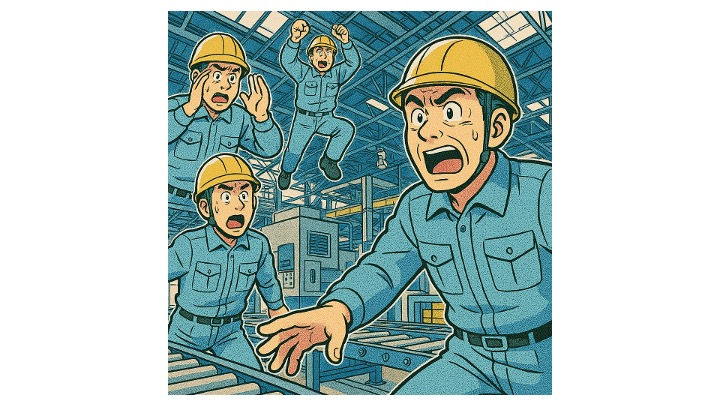Kaizen Capabilities
- hidet77
- Jun 4
- 4 min read

Why do we use the adjective “small” with Kaizen?
This made me concerned. For example, suppose you identify a Muda that is ten seconds, or ten centimeters, or inches (the units do not matter). Now, when we implement a Kaizen, are we tackling one unit at a time, making small steps, and continually improving it? Will we take whatever incremental steps are necessary to improve? I’m reasonably sure we won't pursue such time-consuming steps. Instead, we will focus on eliminating the identified Muda. Of course, the Kaizen might not deliver the desired impact, and we should implement more Kaizen; however, we will not attempt to go incremental on a Muda.
Kaizen is not about “small” improvements. It is about specific improvements. We have set a target for Muda, aiming to eliminate and change certain aspects that affect this objective.
This specification is complex for some to understand. The opposite of small is big, and there was an engineer who claimed he was working on “big” improvements, not Kaizen. The problem was quality, and the solution was to buy a “new” machine. “New.” Another adjective that I hate. What is “new”? If the age of the machine is the issue, how will that solve the problem? The essential aspect is not the age of the machine, but rather the technical functionalities that have improved or not. Upon investigating the technical capabilities of the “new” machine, we found that the machine's speed was indeed faster; however, no improvements were made in terms of quality. Now, the size of the adjective doesn’t matter. It's just illogical. Why do we need more speed to address the quality issues?
The reason Kaizen appears “small” is that it focuses on a specific Muda. Our operations are complex and involve numerous variables. We don’t bundle or batch these variables, hoping that a “big” solution will improve things. Instead, we identify specific causes and tackle them one by one. It may not look “big” to an outsider. However, we believe this process is far more scientific than that of “big” gamblers.
There is one more critical note. “Small” is a relative term. It is very subjective. Two scoops of ice cream may feel big for me, but small for the kids. This applies to improvements as well. A “small” improvement might not be considered small by all organizations. There was a factory with a bottleneck robot where a Muda motion was identified. This motion became a significant project because the engineers and maintenance crews were unable to modify the program. They were not trained to perform such tasks. Therefore, the robot manufacturer was contacted with approvals from internal controllers. Upon arrival, another problem emerged: somehow, a miscommunication occurred, and the arrival crew lacked the necessary programming capability. They thought they were there for a mechanical project. Additional emails circulated through the organization, and finally, the expected programmers arrived. Unfortunately, they weren’t very familiar with adjusting a program, which caused further delays. By the end of this project, several months had passed. In a different factory, a similar robot with analogous motion issues was resolved during one lunch break. They called it a “small” improvement.
The extent of improvement, whether “small” or “big,” depends on the Kaizen capability of an organization. Just because an improvement is “big” for one organization doesn’t mean it is the same for another. This capability is often overlooked, yet it is crucial. Many TPS coaches intentionally use the word “small” to strengthen the Kaizen capabilities within an organization. They say, “Kaizen the Kaizen capabilities.” This means that instead of seeking help from outsiders, organizations should develop their internal capabilities and resources. Rather than relying on specialists or staff skills, they should focus on building the capabilities of frontline managers and employees to drive further improvements. This doesn’t mean that specialists can relax; they need to enhance their own Kaizen capabilities while training others to achieve a higher level of proficiency.
This Kaizen capability is not just about people; it encompasses all resources, including machines, materials, and methods. I refer to this as Kaizen-friendly. For example, the activation switch of a machine should not be locked to the machine or the ground. Instead, a flexible location switch allows for improvements as the work motion evolves. Such small changes enable the frontline to adjust according to their needs. All resources should consider such Kaizen friendliness. If we choose to implement something that is not Kaizen-friendly, management must ensure proper support.
The unfortunate fate of organizations that do not refine the definitions of “small” through Kaizen capability is that they become trapped in a cycle of focusing solely on what they “can” do rather than on what they “need” to do. The concept of Kaizen should not be limited to what people can achieve. As we evolve, individuals must challenge themselves with goals beyond what they have accomplished in the past. My coach would say, “Stop jumping around for low-hanging fruit.” He would leave those to newcomers in Kaizen. Meanwhile, senior students are encouraged to enhance their coaching skills and engage in more Kaizen activities.
If you prefer to refer to Kaizen as "small” improvements, which is perfectly fine, you should continuously develop Kaizen capabilities within the organization. Otherwise, the improvement may not be competitive enough in this dynamic market.



Comments